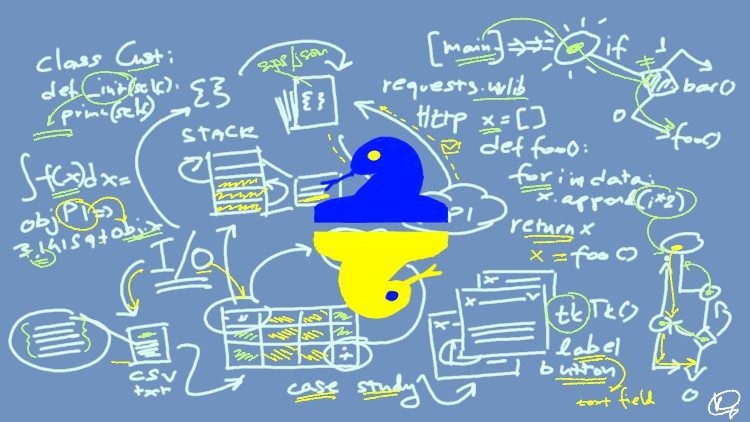
What you will learn
Analyze and develop solutions for problems using Python
Learn and advance their knowledge of Python by applying several conventions
Learn how to solve problems by mastering aspects of Python
Demonstrate tangible knowledge by consuming APIs and building GUIs
Learn to analyze project requirements in order to develop quality software
Description
Welcome to Python Programming Principles!
In this course we will endeavor to acquire a firm grasp of the most popular language out there, Python. Python is an exceptional tool that can complement complex logic onto other implementations or even set the starting point of a variety of architectures. This course is intended for all levels of Pythonians out there. If you’re a complete beginner, this is a nice starting point that can potentially open the door to higher levels as you dive deeper. If you’re an expert and you’re looking to refresh certain concepts or acquire different perspectives, this is an exceptional tool for you. The course incorporates various concepts and conventions used in the language:
-
Basic Concepts (You’ll learn the basic structures such as variables, conditional statements, looping, input/output etc. that are the cornerstone for proper use.
-
Data Handling/Persistence (You’ll learn about manipulating data using a variety of different data structures and how to properly store it in custom files of designated formats).
-
Object Oriented Programming (OOP is essential to almost any developer out there. You need to know what a class is, how it’s been used, what are the objects and what are its properties and methods. Then you’ll learn about inheritance and how to expand the logic for code maintenance).
-
Modularity & File System (In this section you’ll learn how to break your code into multiple distinctive chunks in order to organize and further maintain and improve your architecture. The best way to generate quality code is to divide and conquer. This is the best practice from the beginning of time itself.
-
GUIs & Consuming APIs (This section will give you a feel of a professional level code and task that occur in the industry. You’ll learn about requests, how to communicate with external APIs or (Application Programming Interfaces) and how to give a visual flare to your code using Tkinter, the famous built-in library for graphical environments.
So, if you’re as excited as I am, let’s strap in and start our journey, together!
Your instructor.
Content
Basic Concepts
Data Handling and the Object Oriented Paradigm
Modularity, the File System & GUI
Creating GUIs & Accessing APIs (Application Programming Interfaces)
Certification Examination